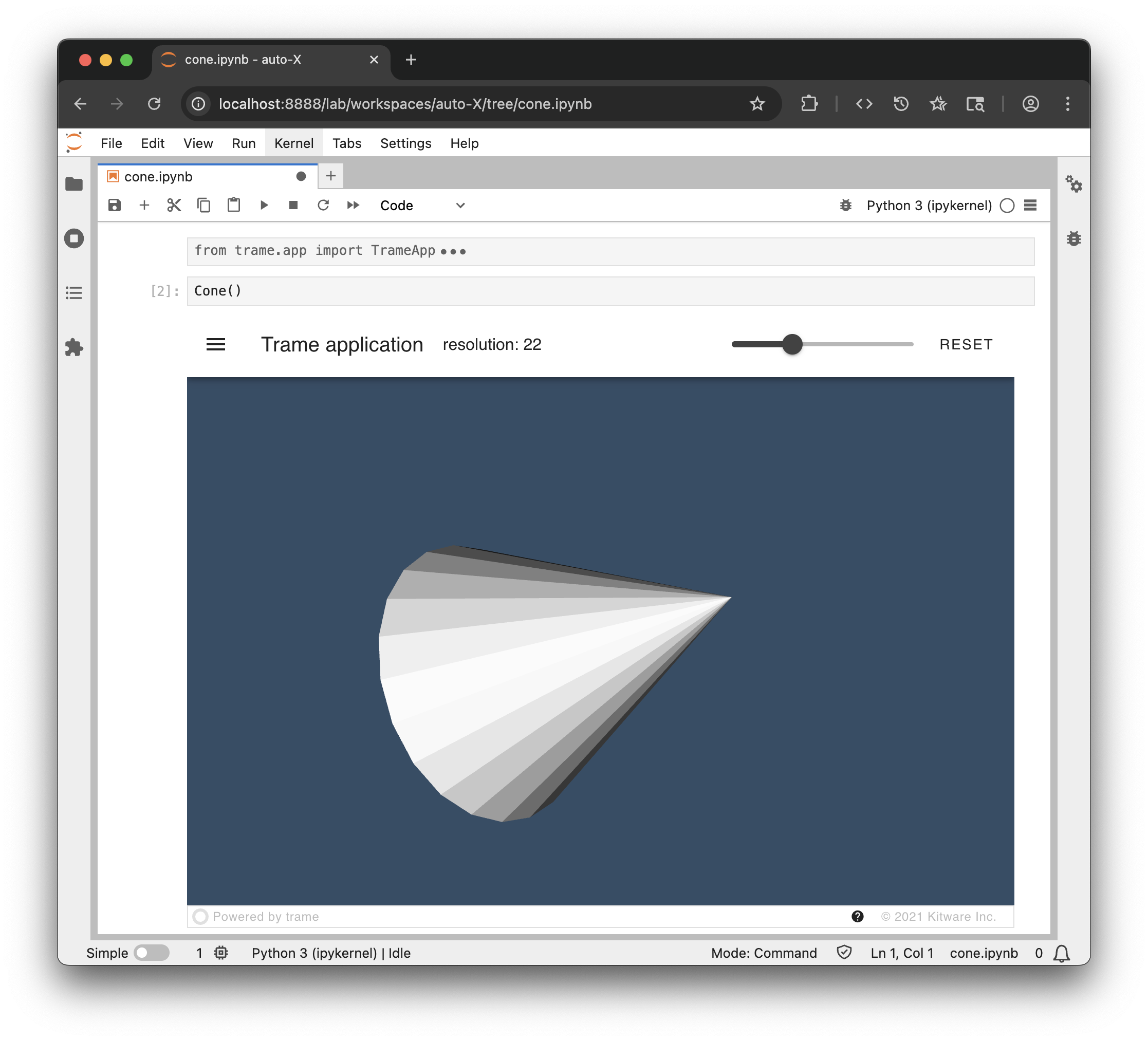Jupyter
Trame applications can be imported and shown within a Jupyter cell without missing any of your application capabilities.
The trame-cookiecutter provide an initial helper that live under {package_name}/app/jupyter.py which provide a show() method.
But such show() method can be implemented for a single file application like below when no additional parameter are required for your application:
def show(**kwargs):
from trame.app import jupyter
jupyter.show(server, **kwargs)Also the layout can be directly returned and will be displayed within Jupyter appropriately. And the server can be started as a background task by calling await layout.ready.

The way such integration works is by running the trame server as an asynchronous task within Tornedo (Jupyter kernel) and opening a new port so that iframe can connect to it. This means that everything defined within your Jupyter environment is accessible within trame and vice-versa.
Code example
Disable trame version 3 warning.
import os
os.environ["TRAME_DISABLE_V3_WARNING"] = "1"Create trame application as a class so it can be instantiated several time within Jupyter.
from trame.app import get_server
from trame.ui.vuetify import SinglePageLayout
from trame.widgets import vuetify, vtk
from trame.decorators import TrameApp, change
@TrameApp()
class Cone:
def __init__(self, name=None):
self.server = get_server(name)
self.server.client_type = "vue2"
self._ui = None
# Build UI
self.ui
@property
def state(self):
return self.server.state
@property
def ctrl(self):
return self.server.controller
@property
def resolution(self):
return self.state.resolution
@resolution.setter
def resolution(self, v):
with self.state:
self.state.resolution = v
def reset_resolution(self):
self.resolution = 6
@change("resolution")
def _resolution_change(self, resolution, **kwargs):
print("New resolution", resolution)
@property
def ui(self):
if self._ui is None:
with SinglePageLayout(self.server) as layout:
self._ui = layout
with layout.toolbar:
vuetify.VSpacer()
vuetify.VSlider(v_model=("resolution", 6), min=3, max=60, hide_details=True)
vuetify.VBtn("Reset", click=self.reset_resolution)
with layout.content:
with vuetify.VContainer(fluid=True, classes="pa-0 fill-height"):
with vtk.VtkView() as vtk_view:
self.ctrl.reset_camera = vtk_view.reset_camera
with vtk.VtkGeometryRepresentation():
vtk.VtkAlgorithm(
vtkClass="vtkConeSource",
state=("{ resolution }",)
)
return self._uiStart the server and display the application UI.
cone = Cone()
await cone.ui.ready
cone.ui